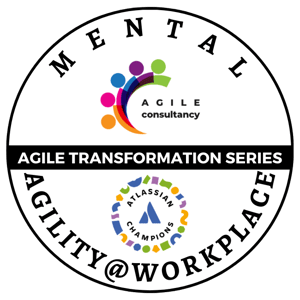Overview
We live in a world where the rules of work are shifting daily. Technology evolves, industries transform, and the way we collaborate continues to change. In the middle of this flux, one capability rises above the rest: Mental Agility@Workplace. For the purpose of this newsletter, we shall use the terms Mental Agility and Mental Agility@Workplace interchangeably, albeit with salient differences.
So, what is it?
In essence, Mental Agility@Workplace is the capacity to pivot one’s thinking during discomfort or moments of cognitive stress in order to positively influence both mental state and decision-making. Scholars describe it as the ability to think clearly under pressure (discomfort and disruptive circumstances), to adapt rapidly to new contexts, and to shift perspectives when required (De Meuse, 2017; Lombardo & Eichinger, 2019).
And the Workplace?
The workplace is not merely a physical office or a remote desk. It is the ecosystem where ideas are exchanged, decisions are made, and collaboration shapes outcomes. Culture, leadership, tools, and relationships all form this environment (Schein & Schein, 2017). For homemakers, retirees, or freelancers, the workplace may equally be their homes, and for some, it may be inner comfort zones that inadvertently hold them back.
What is it NOT?
Mental Agility is not an inborn trait. Research suggests it can be developed and mastered through know-how, deliberate practice, reflection, and exposure to adaptive challenges (DeRue et al., 2012; Connolly, 2020). Mental Agility is not dependent on gender or age, as no conclusive evidence has isolated groups inherently lacking mental agility. Mental Agility is not a means of avoiding reality; rather, it is a mindful approach to confronting challenges and adopting proactive stances. Last but not least, Mental Agility is not merely associated with slowing down the speed of thoughts and thinking with clarity; it is flexibility, resilience, and clarity rolled into one.
Why does it matter now?
In a volatile, uncertain, complex, and ambiguous (VUCA) world, intensified by the rise of AI and ongoing disruption — mental agility determines who thrives and who lags behind (Johansen, 2017; Reeves & Whitaker, 2020). Without it, individuals risk diminished adaptability, impaired emotional well-being, and long-term psychosomatic effects. The ability to manage internal turbulence will be one of the most critical workplace skills in the years ahead, hence the urgency to embrace Mental Agility@Workplace.
Coming Up…
Over the next 10 issues, this newsletter will share practical, science-backed strategies to strengthen Mental Agility@Workplace. Together, we will peel back layers, challenge assumptions, and learn how to embed Mental Agility@Workplace into daily practice.
Next week in Issue 2: Escaping Autopilot Decision-Making
Note: This article has also been published here: https://www.linkedin.com/newsletters/mental-agility-workplace-7373906131653615616/
References
Connolly, J. (2020). Learning Agility: Unlock the Lessons of Experience. Wiley.De Meuse, K. P. (2017). Learning Agility: A Construct Whose Time Has Come. Consulting Psychology Journal, 69(4), 267–295.
DeRue, D. S., Ashford, S. J., & Myers, C. G. (2012). Learning agility: In search of conceptual clarity and theoretical grounding. Industrial and Organizational Psychology, 5(3), 258–279.
Johansen, B. (2017). The New Leadership Literacies: Thriving in a Future of Extreme Disruption and Distributed Everything. Berrett-Koehler.
Lombardo, M. M., & Eichinger, R. W. (2019). FYI: For Your Improvement. Korn Ferry Leadership Architect.
Reeves, M., & Whitaker, K. (2020). A guide to building a more resilient business. Harvard Business Review.
Schein, E. H., & Schein, P. A. (2017). Organizational Culture and Leadership (5th ed.). Wiley.



